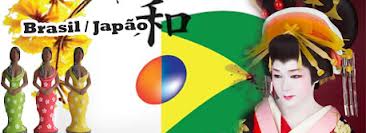 Johnna and I tell people about the project in Japan. We say that we’re going to work with Brazilians, Latinos and other internationals.
Johnna and I tell people about the project in Japan. We say that we’re going to work with Brazilians, Latinos and other internationals.
Response: (Surprised looks and questions.)
“I didn’t know there were so many Brazilians in Japan! What is the connection between Brazil and Japan? ”
Here is how we reply…
Historical Facts
1850 – At the end of the nineteenth century and the beginning of the twentieth century, coffee was the main exported product of Brazil. In order to harvest the large amounts of coffee beans, Brazil used slave labor from Africa. In 1850, when slavery was abolished, Brazil began to bring in Europeans, especially Italians, to work in the fields. However, due to poor working conditions and low salaries, the Italian government was forced to interfere with the immigration relationship between Brazil and Italy, making the migration of Italians to Brazil more difficult. In 1908, Japanese workers starting coming to Brazilian coffee plantations to fill the hole in the work force left by the Italians. Today, it is estimated there are 1.5 million Japanese descendants in Brazil.
1980 – Brazil faced a continuing economic crisis while Japan experienced growth and strength. Thousands of Brazilians with Japanese ancestry immigrated to Japan.
1990 – The Japanese government realized many immigrants had arrived illegally. They decided to open the doors for immigration for those who had Japanese descent until the third generation. This decision allowed many immigrants to receive their legal documents. Also, since Brazil has the largest number of Japanese people outside of Japan, Japan attracted another wave of Brazilians with Japanese descent in the 1990s. It is worth noting that the majority of Brazilian immigrants working in Japan are working in industries that are not so attractive to Japanese natives. Most of them settle outside of major cities where there are factories and farms. Gunma, Toyota, and Oizumi are some of the cities in which Brazilians choose to live and work.
2009 – The financial crisis hit the world. The global financial crisis also hit Japan. This critical economic situation caused many immigrants, especially Brazilians, to return to their home country. The Japanese government offered incentives to all individuals wishing to return to their countries of origin. In the case of Brazilians, the strengthening of the Brazilian economy has made the decision to return to Brazil seen as a great opportunity.
Important Facts
* The Brazilian Consulate that processes more cases in the world is the Consulate of Brazil in Tokyo.
* Tokyo has the largest Brazilian festival called “Carnival” outside of Brazil.
* Portuguese is the third most spoken foreign language in Japan preceded by Chinese and Korean.
* The city of Oizumi has 15 % of the population speaking Portuguese as their native language.
* There are Portuguese language newspapers and radios in Japan and the music style, bossa nova, is very popular.
* The second largest group of immigrants in Japan is Latinos. The majority of them are Brazilians.
Challenging Facts
In spite of having Japanese descent, Brazilians suffer prejudice because even though they may look Japanese, they do not act like it. Plus many of the Japanese-Brazilian immigrants have difficult learning the Japanese language. These factors together make it very difficult for Brazilians to merge with Japanese culture and society, creating at times an emotional and psychological vacuum that needs attention. At the same time, this people group feels an ambiguity toward Japan – feeling as if they both belong and do not belong in Japan.
I hope that this simple and quick description is useful in order to understand the context, architecture, and backgrounds involving two countries: Brazil and Japan.
Fábio



